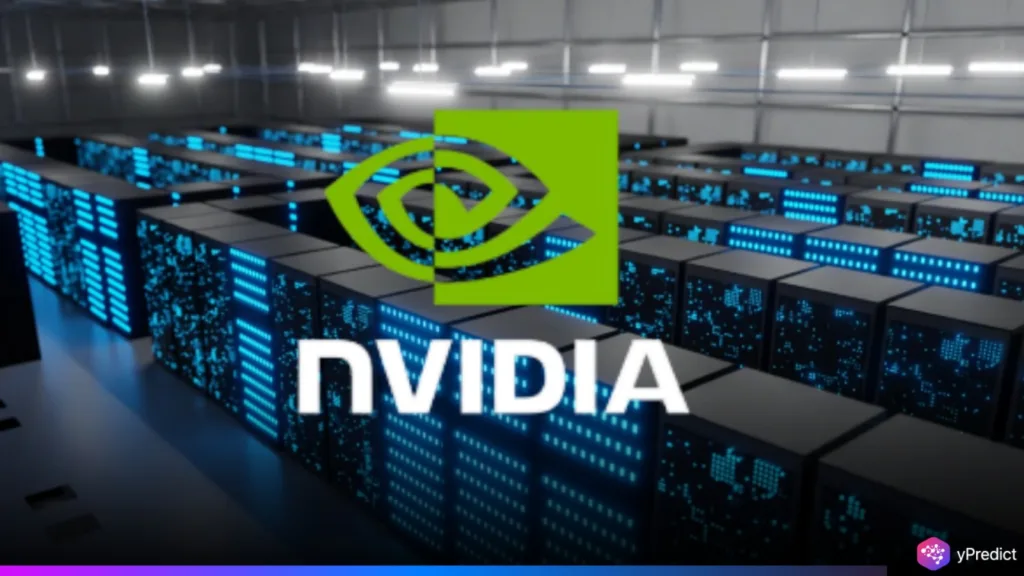
In a strategic move to meet the rising energy demands of AI infrastructure, Texas Instruments (TI) and Nvidia have collaborated to develop an advanced 800-volt high-voltage direct current (HVDC) power delivery architecture.
This next-generation solution brought forth by the TI-Nvidia Partnership to Launch 800V HVDC for AI Data Centers is designed to power hyperscale AI data centres more effectively, allowing for over 1 megawatt per rack while lowering copper usage, system complexity, and energy loss.
The partnership is a vital step towards creating scalable, sustainable AI compute environments that can handle the exponential growth in AI workloads and power requirements.
AI Power Demands Spark TI-Nvidia Partnership
Texas Instruments (TI) has partnered with Nvidia to develop cutting-edge power management and sensing solutions for 800V high-voltage direct current (HVDC) distribution systems. This ground-breaking program addresses the rising energy demands of artificial intelligence (AI)-powered data centres, paving the way for a more efficient, scalable, and compact power delivery infrastructure.
Moreover, this initiative addresses the mounting energy demands of artificial intelligence (AI)-driven data centers and sets the stage for a more efficient, scalable, and compact power delivery framework. As AI technologies advance and become more computationally intensive, the energy requirements per server rack increase substantially.
According to estimates, the average 100kW load per rack may soon approach 1 megawatt. Traditional 48V power systems, which would need about 450 pounds of copper per rack to achieve such demands, are rapidly approaching their physical and logistical constraints.
Therefore, to address these problems, TI and Nvidia are developing an 800V HVDC power architecture that greatly increases power density and conversion efficiency. This high-voltage technology not only decreases the size and weight of power supply components, but it also eliminates infrastructure complexity, which is essential for supporting large-scale AI workloads in data centres. Jeffrey Morroni, Director of Power Management R&D at Kilby Labs and TI Fellow, said in a statement that,
A paradigm shift is happening right in front of our eyes. AI data centers are pushing the limits of power to previously unimaginable levels. A few years ago, we faced 48V infrastructures as the next big challenge. Today, TI’s expertise in power conversion combined with Nvidia’s AI expertise is enabling 800V high-voltage DC architectures to support the unprecedented demand for AI computing.
The Sustainability and Strategic Angle
Beyond raw performance, the TI-Nvidia collaboration has significant sustainability implications. With AI energy use expected to account for an increasing share of global data centre electricity demand, energy-efficient distribution solutions such as 800V HVDC have the potential to dramatically cut carbon footprints.
Moreover, the move allows both companies to stay ahead of the regulatory and market pressures around energy optimization and climate goals. Data center operators, hyperscalers, and infrastructure providers are increasingly prioritizing power-efficient solutions in procurement.
Therefore, this joint venture offers a roadmap to build green, high-density compute clusters capable of powering large language models, generative AI, and other cutting-edge applications, without pushing energy infrastructure to a breaking point. Gabriele Gorla, Vice President of System Engineering at Nvidia, said,
Semiconductor power systems are crucial to building high-performance AI infrastructure. By working with TI, we’re creating an architecture that can support the next generation of large-scale AI data centers with greater efficiency.
Conclusion
The TI-Nvidia partnership to implement 800V HVDC power distribution marks a significant step forward in AI data centre architecture. By solving the essential concerns of efficiency, scalability, and sustainability, the alliance establishes a new standard for high-performance computing.
As AI models become more complicated and energy-intensive, advances like these will be critical to meeting global demand while reducing environmental impact. This partnership demonstrates industry leadership while also providing a scalable template for the future of intelligent, energy-efficient data centre design.






